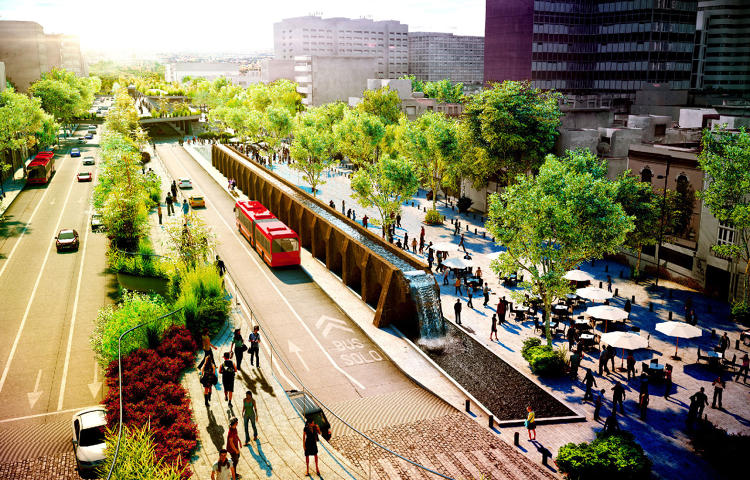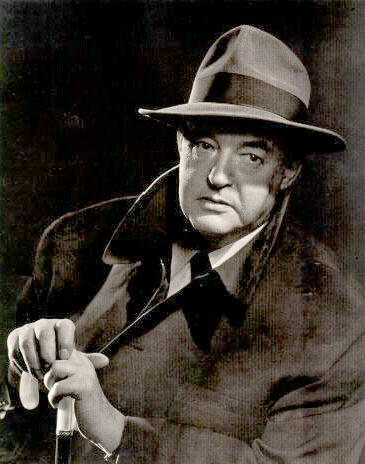Judi Lynn
Judi Lynn's JournalBolivia's second-largest lake dries up and may be gone forever, lost to climate change
Bolivia's second-largest lake dries up and may be gone forever, lost to climate change
As Andean glaciers disappear, so do the sources of Lake Poopó’s water, say scientists who blame a warming environment, El Niño and mining
Associated Press
Thursday 21 January 2016 21.10 EST
Overturned fishing skiffs lie abandoned on the shores of what was Bolivia’s second-largest lake. Beetles dine on bird carcasses and gulls fight for scraps under a glaring sun in what marshes remain.
Lake Poopó was officially declared evaporated in December. Hundreds, if not thousands, of people have lost their livelihoods and gone.
High on Bolivia’s semi-arid Andean plains at 3,700 metres (more than 12,000 feet) and long subject to climatic whims, the shallow saline lake has essentially dried up before only to rebound to twice the area of Los Angeles.
But recovery may no longer be possible, scientists say.
“This is a picture of the future of climate change,” says Dirk Hoffman, a German glaciologist who studies how rising temperatures from the burning of fossil fuels has accelerated glacial melting in Bolivia.
More:
http://www.theguardian.com/world/2016/jan/22/bolivias-second-largest-lake-dries-up-and-may-be-gone-forever-lost-to-climate-change
More former Uribe aides charged for wiretapping Colombia’s Supreme Court
More former Uribe aides charged for wiretapping Colombia’s Supreme Court
Posted by Adriaan Alsema on Jan 21, 2016
The former press secretary and judicial adviser of former Colombia President Alvaro Uribe have been charged over the illegal wiretapping of the Supreme Court, politicians, journalists and human right workers carried out during the previous administration.
According to the prosecution, there exists enough evidence to demonstrate that former Press Secretary Cesar Mauricio Velasquez and Judicial Secretary Edmundo del Castillo were directly involved in the wiretapping carried out by intelligence agency DAS.
The two are already charged for a meeting with paramilitary representatives inside the presidential palace, also in 2008, to conspire to discredit the Supreme Court that was investigating Uribe’s cousin Mario, a former Senator, for his ties to paramilitary groups.
Uribe's cousin was just one of more than 60 Congressmen, mainly from the coalition supporting Uribe, who have been convicted for ties to the AUC.
The wiretapping scandal broke in 2008 and has since resulted in the incarceration of two former DAS directors, the dismantling of the intelligence agency that had been infiltrated by paramilitary group AUC, and the incarceration of Uribe’s then chief of staff, Bernardo Moreno.
More:
http://colombiareports.com/more-uribe-aides-charged-with-wiretapping-supreme-court/
The emergence of social cleansing in El Salvador
The emergence of social cleansing in El Salvador
Carlos A. Rosales and Ana Leonor Morales 20 January 2016
Twenty year-old Dennis Martínez never knew what hit him, or why. He died instantly after being shot execution style inside the little shack where he lived in the San Blas coffee plantation, in a semi-rural area a short drive away, south of El Salvador´s capital city. Dennis was not a gang member. Instead, he worked in the farm as a book keeper and served devoutly in a nearby evangelical church. He was, in his mother own words, “every mom’s dream son.”
According to what investigative journalists have been able to piece together from crime scene photos, forensic reports and witness accounts—including Dennis’ own mother—, the young man was shot in the back of the head after a heavily armed police commando stormed the farm one late night back in March. The cops had being tipped off that a small group of Mara Salvatrucha (MS-13) gang members had sought refuge in the farm in recent days fleeing police raids in their own barrios.
That night, the Salvadoran police killed 8 young men and women, including Dennis and 16 year-old Sonia Guerrero, who, according to the reporters covering the story, was not a gang member either. Sonia was there because she was romantically involved with one of the six alleged gang members the police massacred that night. The forensic report established that the single shot wound in her mouth shattered her spine as she knelt.
The account of the carnage—which appeared in the digital newspaper El Faro—underscores what some observers are alleging is now a common occurrence in El Salvador. Press reports and human rights activists contend that police are taking the law into their own hands and conducting raids with a take-no-prisoners mentality targeting the youth gangs whose violent ways and criminal acts have brought the entire country to its knees.
More:
https://www.opendemocracy.net/democraciaabierta/carlos-rosales-ana-leonor-morales/emergence-of-social-cleansing-in-el-salvador
Meet The Booming Design Practice That's Transforming Mexico City
Meet The Booming Design Practice That's Transforming Mexico City
Architect Fernando Romero tells us what fuels his creative vision, from rapid prototyping to Mayan culture.

Avenida Chapultepec by FR-EE is a linear park slated for Mexico City.
Mexico City–based architect Fernando Romero’s most recent project isn’t a building, but a scintillating orb made from thousands of custom-cut crystals. Illuminated from within, El Sol, as it’s named, features a tessellated surface composed of triangular prisms—a nod to the pyramids that were so meaningful to Aztec and Mayan culture. There’s an aural element to the piece, too: a soundtrack of acoustic waves produced by the sun, which astronomers at the University of Birmingham have recorded since the 1970s. The piece throws light around a room and gives off a disco ball vibe that's fitting, since Swarovski commissioned it for the tradeshow-cum-social-event Design Miami.

El Sol is a microcosm of Romero’s body of work; it's modern, technologically rigorous, in dialog with history, and infused with flash. The young architect—he is 44 years old—founded FR-EE, Fernando Romero Enterprise, in 2000 and opened a New York City office in 2010. A protege of Rem Koolhaas—Romero worked at OMA for three years—the architect bears some similarity to his mentor in that his structures are radical, iconoclastic, dictated by function and use, aggressively modern, and never short of rhetoric.
Many of Romero’s designs are conceptual or yet-to-be-built, but he was catapulted into the spotlight by the Museo Soumaya, a private art museum completed in 2011 and his crowning achievement to date. Named after Romero’s wife, Soumaya Slim, and bankrolled by his father in law, telecommunications billionaire Carlos Slim (who was the richest man in the world from 2010 to 2013), the museum is an engineering marvel with an asymmetric, torqued structure clad in metallic tiles.
Over the past few years, Romero has been steadily remaking—or reimagining—the Mexico City's architectural fabric, adding another chapter to the city's rich design legacy. 20 million people a year visit Plaza Mariana, the public space surrounding the Basilica of Guadalupe that the firm designed in 2009, and he's at work on Plaza Carso, a massive mixed-use master plan due to be finished in 2017. In 2014 his design for the Mexico City Aquarium opened, and he's created a number of sculptural tower proposals and concepts as well, like the Archivo design museum.
More:
http://www.fastcodesign.com/3055412/meet-the-booming-design-practice-thats-transforming-mexico-city
[center]~ ~ ~

Come closer! Come see more of Romero's work!
 [/center]
[/center]
https://www.google.com/search?hl=en&site=imghp&tbm=isch&source=hp&biw=1226&bih=568&q=Fernando+Romero+Mexico+City+architecture&oq=Fernando+Romero+Mexico+City+architecture&gs_l=img.12...794.16514.0.22173.29.4.0.25.25.0.170.600.0j4.4.0....0...1ac.1.64.img..0.13.239.45Y_TqwsxWU
Honduras leader proclaims archaeology bonanza but 'lost city' doubts linger
Honduras leader proclaims archaeology bonanza but 'lost city' doubts linger
President Juan Orlando Hernández flew in to endorse claims of a legendary ‘city of the Monkey God’ but scientists are sceptical and indigenous group furious
Alan Yuhas
@alanyuhas
Sunday 17 January 2016 06.00 EST
A new expedition to ruins in the Honduran jungle has prompted skepticism from archaeologists and fury from the country’s indigenous people, who say President Juan Orlando Hernández’s embrace of a legendary lost city of the Monkey God is “offensive, discriminatory and racist”.
Last week, Hernández swept down by helicopter to the site, which was first visited by archaeologists with a National Geographic team last year. Hernández showed off artifacts discovered at the site and told reporters that Honduras was obliged to protect its “national patrimony” – for tourism as much as history.
“Our country will offer at low prices and terms the archaeology of the Maya and the White City, the cultural life of the Garífuna, Lenca, Miskito and all the other native people. And also sun, sand and beaches,” he said.
Chris Fisher, of Colorado State University and an archaeologist with the National Geographic, told the Guardian the site is “now called the City of the Jaguar and they are referring to the region as the Ciudad Blanca (White City) preserve”. Fisher also warned of “much misinformation” in the press; early Honduran and international reports have used the names interchangeably.
The legend of the White City largely derives from Theodore Morde, an eccentric American who in 1940 told the New York Times that he had found an incredible “city of the monkey god”.
More:
http://www.theguardian.com/world/2016/jan/17/honduras-lost-city-president-hernandez-doubts-archaeology
Incredible video shows swarms of locusts covering 1.7 million acres of land in Argentina
Incredible video shows swarms of locusts covering 1.7 million acres of land in Argentina
18:45, 15 Jan 2016
Updated 19:40, 15 Jan 2016
By Jessica Haworth
This video shows an incredible plague of locusts that have blighted entire areas in Argentina.
Rural committees have begged the authorities to do something about the plague which has affected around 1.7 million acres of land in the northern province of Santiago del Estero.
Directors of the Rural Confederation Committee (CRA) asked governments to help get rid of the "destructive" insects.
The mind-boggling images, which surfaced onto social media, show thousands of the insects covering walls of a derelict building as well as a large tree.
Thousands of the bugs covered walls, clinging on as the camera panned around a courtyard.
More:
http://www.mirror.co.uk/news/world-news/incredible-video-shows-swarms-locusts-7186671
If Americans spend more on healthcare, why do Costa Ricans live longer?
If Americans spend more on healthcare, why do Costa Ricans live longer?
Wealthy Americans live longer than Costa Ricans, but poorer Americans don't.
by Roheeni Saxena - Jan 13, 2016 9:27am CST

Citizens of the United States have a higher income than Costa Ricans, and they spend more of it on health care. In spite of this, Costa Rica has a higher life expectancy than the US—a new article published in PNAS attempts to explain why. The analysis focuses on the steep socioeconomic gradient in health that exists in the US, where the poor have considerably worse health outcomes than the wealthy.
The authors, Rosero-Bixby and Dow, argue that while the wealthiest people in the US have a higher life expectancy than anyone in Costa Rica, the poorest residents of the US have a considerably lower life expectancy.
In Costa Rica, the life expectancy is 78.5 years, though the per-capita GDP is quite low at $9,200. In contrast, the US has a GDP of $40,000, and a life expectancy of 77.4 years. Typically, economic development raises the national life expectancy, so it’s unusual that the US does not have a life expectancy commensurate with its income.
The authors point to one important difference between the US and Costa Rica that likely plays a factor in their different life expectancies: national health insurance. Costa Rica has a single national health insurance system that covers the majority of its residents. In comparison, though the US has drastically reduced the number of uninsured people in the US in recent years, the US healthcare system is still fragmented by private insurance companies. The authors of this article suggest that national health insurance helps Costa Rica to keep its healthcare costs low, whereas private, for-profit health insurance companies have failed to do so.
More:
http://arstechnica.com/science/2016/01/if-americans-spend-more-on-healthcare-why-do-costa-ricans-live-longer/
Excavation of Ancient Lost City Yields New Finds
Excavation of Ancient Lost City Yields New Finds
Archaeologists are revealing the site’s artifacts, with help from the President of Honduras.

[font size=1]
Honduran President President Juan Orlando Hernández, in white, confers with archeologist Chris Fisher, right, at the site of an ancient city in the Mosquitia region of Honduras.
Photograph by Dave Yoder, National Geographic
[/font]
Douglas Preston
PUBLISHED Wed Jan 13 11:58:28 EST 2016
Excavation of a “lost city” in eastern Honduras has begun with a flourish, with President Juan Orlando Hernández personally removing the first stone sculpture from the site Tuesday. The artifact is one of dozens from a cache found in February of last year among ruins of a Pre-Columbian city deep in the jungle of La Mosquitia. The artifacts were left untouched under military protection at the undisclosed location. Now, a joint Honduran-American archaeological team has returned to the site to excavate the artifacts and further explore the region.
The vessel personally removed yesterday by President Hernández is a spectacular vessel carved in basalt. The rim of the jar depicts two animal figures, one of which might possibly represent the head of a vulture, common to that area. The vessel is one of fifty-two stone sculptures, discovered on the February expedition, which had been deposited at the base of an earthen pyramid in the central part of the city about five to eight hundred years ago, and apparently left untouched ever since. Only the very tops of the sculptures could be seen protruding from the ground.
In just the first few days of excavation this month, the team, led by archaeologist Chris Fisher of Colorado State University in Fort Collins, has found a dozen more objects, bringing the total to sixty-four. The artifacts are mostly stone jars and “metates,” which are presumed to be thrones or seats of power. Many of the objects are elaborately decorated with animal heads and geometric patterns. One of the metates is incised with a series of designs that archaeologists say seem to resemble those found in a Maya “sky band,” an abstract depiction of the night sky. This could be a significant find, helping scientists to understand the connection between the largely unknown and unnamed culture of prehistoric Mosquitia and its powerful Maya neighbors to the west and north.
The excavation is being conducted under a grant from the National Geographic Society, and with the support of the Honduran government and the Honduran Institute for History and Anthropology (IHAH), and its director, Virgilio Paredes Trapero.
More:
http://news.nationalgeographic.com/2016/01/160113-honudran-lost-city-archaeology/
Neoliberalism Raises Its Ugly Head in South America: Washington Targets Venezuela, Brazil and Argent
January 8, 2016
Neoliberalism Raises Its Ugly Head in South America: Washington Targets Venezuela, Brazil and Argentina
by Jack Rasmus
After 9-11, the United States focused its most aggressive foreign policy on the Middle East – from Afghanistan to North Africa. But the deal recently worked out with Iran, the current back-door negotiations over Syria between U.S. Secretary of State John Kerry, and Russia Foreign Minister Sergei Lavrov, and the decision to subsidize, and now export, U.S. shale oil and gas production in a direct reversal of U.S. past policy toward Saudi Arabia – together signal a relative shift of U.S. policy away from the Middle East.
With a Middle East consolidation phase underway, U.S. policy has been shifting since 2013-14 to the more traditional focus that it had for decades: first, to check and contain China; second, to prevent Russia from economically integrating more deeply with Europe; and, third, to reassert more direct U.S. influence once again, as in previous decades, over the economies and governments in Latin America.
Following his re-election in 2012, Obama announced what was called a ‘pivot’ to Asia to contain and check China’s growing economic and political influence. In 2013-14, it was the U.S.-directed Ukraine coup – i.e. a pretext for sanctions on Russia designed to sever that country’s growing economic relations with Europe. But there is yet another U.S. policy shift underway that is perhaps not as evident as the refocus on China or the U.S. new ‘cold war’ offensive against Russia. It is the U.S. pivot toward Latin America, begun in 2014, targeting in particular the key countries and economies of South America – Venezuela, Brazil, and Argentina – for economic and political destabilization as a fundamental requisite for re-introduction of Neoliberal policies in that region.
Venezuela: Case Example of Destabilization
Economic destabilization in its most recent phase has been underway in Venezuela since 2013. The collapse of world oil and commodity prices, a consequence in part of the United States vs. Saudi fight that erupted in 2014 over who controls the global price of oil, has caused the Venezuela currency, the Bolivar, to collapse. The United States raising its long term interest rates the past year has intensified that currency collapse. But U.S. government and banking forces have further fanned the flames of currency collapse by encouraging speculators, operating out of Colombia and the ‘DollarToday’ website, to ‘short’ the Bolivar and depress it still further. U.S. based media, in particular the arch-conservative CATO institute in Washington, has joined in the effort by consistently reporting exaggerated claims of currency decline, as high as 700 percent, to panic Venezuelans to further dump Bolivars for dollars, thus causing even more currency collapse. Meanwhile, multinational corporations in Venezuela continue to hoard more than US$11 billion in dollars, causing the dollar to rise and the Bolivar to fall even more. The consequence of all these forces contributing to collapse of the currency is a growing black market for dollars and shortages of key consumer and producer goods.
More:
http://www.counterpunch.org/2016/01/08/neoliberalism-raises-its-ugly-head-in-south-america/
The heated human rights debate facing Argentina’s new president
The heated human rights debate facing Argentina’s new president
January 8, 2016 6.06am EST
No sooner had centre-right candidate Mauricio Macri been elected president of Argentina than one of the country’s leading newspapers, La Nación, published an unsigned editorial headed “No More Revenge”. In it, the paper bluntly said that “the election of a new government is an ideal time to end the lies about the 1970s and the current violations of human rights”.
The phrase “current violations of human rights” was a heavily loaded reference to what the editorial called the “embarrassing sufferings” of those who have been judged and sentenced for crimes committed during what the author called the “repression of subversion” – that is, Argentina’s 1976-1983 dictatorship.
During that period, 30,000 people were “disappeared”, and approximately 500 children were stolen from their incarcerated parents; many were later brought up by their parents' murderers. In 1985, during the administration of Raúl Alfonsín, members of the military government were put on trial and sent to prison. However, the 1986 Full Stop Law and the 1987 Law of Due Obedience, together with the subsequent pardons given by the then president Carlos Menem in 1989 and 1990, set the perpetrators free. Only with President Néstor Kirchner, who was elected in 2003, were those laws declared unconstitutional, resulting in the trials being reopened in 2006.
La Nación was decrying the fact that those repressors were or still are being held in common prisons despite their advanced age. The piece also accused former president Cristina Fernández de Kirchner of installing a “culture of revenge” in the media and in schools.
More:
http://theconversation.com/the-heated-human-rights-debate-facing-argentinas-new-president-52344
Profile Information
Member since: 2002Number of posts: 160,515